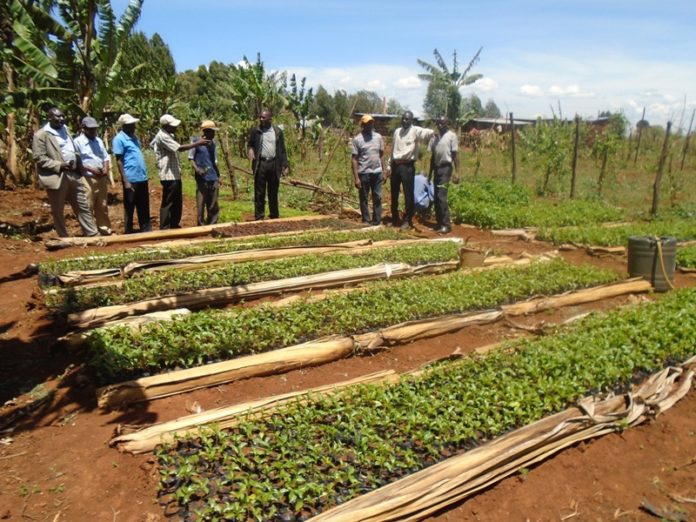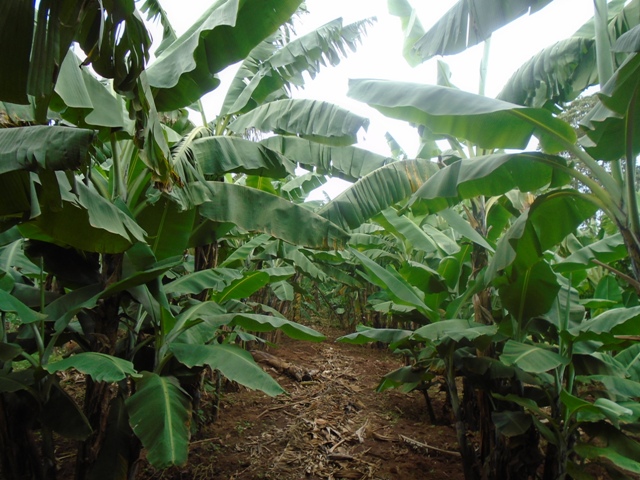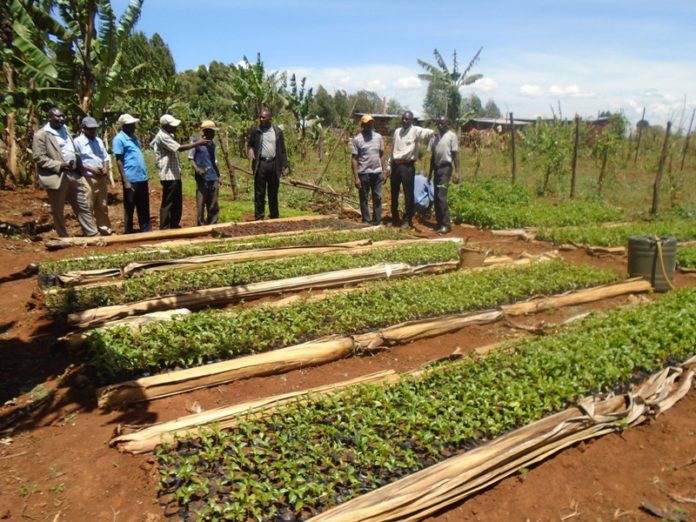By Malachi Motano
Boaz Odemu Bulimu is now making profits from Tissue Culture banana farming which he began in 2013 in Lugari Sub County.
Tissue culture is farming technique used to maintain or grow plant cells, tissues or organs under sterile conditions on a nutrient culture medium of the known composition.
“Before adopting the TC Banana I grew traditional varieties which I sold for around ksh 50 a whole banana. I also did subsistence farming of maize, beans, and sweet potatoes. We were content with what we earned, we didn’t know any different.”
Bulimu says bananas are of great importance to small-scale farmers in the developing countries. The crop can be grown in a range of environments and production systems and provides a nutritious staple food and a significant source of revenue all year round.
“Banana farming and its benefits to the population are now becoming a reality in Kenya, with more farmers realizing the potential of the crop in terms of food security. I developed an interest in this type of farming after being presented with a few suckers by a neighbor who wanted me to try my hand at growing bananas.” Bulimu
Having previously worked as a researcher at Kenya Agricultural and Livestock Research organization (KALRO) for several years, Bulimu decided to embark on growing bananas for subsistence and commercial purposes. He set aside one and a half acres of the crop.
Bulimu explains, “Bananas can be grown in a wide range of soils as long as there are good drainage and adequate fertility. They can tolerate short periods of flooding but do require good soil aeration.”
To maintain a good and sustainable water drainage, the farmer has developed an elaborate rainwater harvesting system on his farm. He has dug several interconnected trenches, measuring 120m×3m× 1m, across the five-acre farm.
“One trench can hold up to 360,000m³ of water when full,” he notes, adding the water permeates the soil evenly, enabling his banana stems and other crops to enjoy undisturbed water flow for the most part of the year.
Besides direct raindrops, most of the harvested rainwater is drawn from floods along a section of the road adjacent to his home compound and farm.
Water from the trenches then percolates the soil reaching roots to all crops on the farm, thus enabling sustainability of crop moisture content and especially during periods of a dry spell.
Eliud Wephukulu, Sub County Agricultural Officer says , “Perhaps, Bulimu is the first farmer in Lugari Sub County to successfully utilize flooding rainwater, which up to now was viewed as a menace by local farmers, especially those living along sections roads prone to floods. Bulimu has fully utilized the one and half an acre set aside for growing bananas. At the moment he has 365 stems of the crop.
The 365 stems are able to meet my family’s basic needs throughout the year. He says the project has transformed his family’s socio-economic status.
He has planted a total of 20 varieties of bananas on his farm, with tissue culture and East African Highland Banana (EAHB) being the majority. The crop, which has quickly turned into his major source of income generates a minimum of Kshs. 750,000 per year from fresh banana sales.
“I used to harvest about ten sacks of maize from the one-acre piece of land, but the returns from the bananas are 10 times more than that of maize,” notes Bulimu. The farm produces about 10 mature bunches monthly and he expects to triple this as more plants reach full
maturity.
Bulimu has also intercropped the bananas with other plants such as cassava, beans, varieties of indigenous vegetables and potato.
He reveals, “Bananas can be intercropped with other crops of nutritional importance and food security such as cassava, sweet potato, arrowroots, yam, beans, maize, and coffee.”
Bulimu is now a successful farmer and has become a model farmer and motivation to scores of people who treated banana farming with contempt.
“In fact every last Saturday of the month I usually donate banana suckers to interested farmers,” he disclosed, saying the farmers arrive from the rest of sub counties in Kakamega County.
Wepukhulu says for maximum land utilization, bananas can also be planted on the sloppy areas where their fibrous roots help reduce soil erosion.
He adds that recycling of the plant residue into the farm helps in restoration of the soil nutrients.
“Nothing goes to waste, the peels, leaves, and pseudostems of the banana are used as animal feeds. In return, the manure from the animals is spread on the farm, thus
maximizing the crop’s food security and economic potential,” Wepukhulu.
















